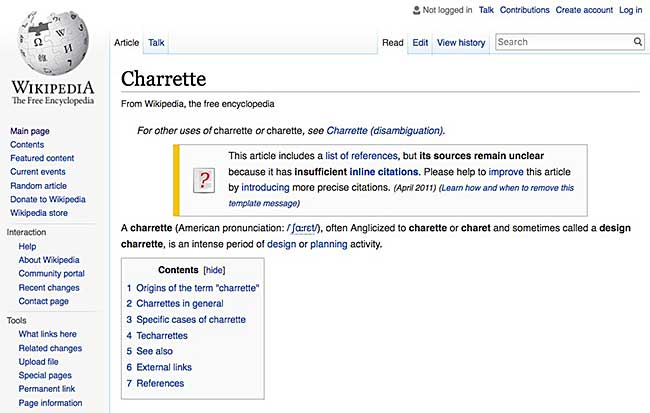Charrette
Background: The Charrette seems to have originated in 19th-century Paris, France, as organized sessions, in which a group of student designers would meet in order to collaborate on solving design problems. The word charrette means "chariot," referring to the legendary habit of students working up to the last minute, through the charrette and even on the way in a chariot to their presentations. The name also carries the connotation of the cart used to carry a condemned person to the guillotine.

Today the term refers to just about any collaborative session of designers, especially a final, intensive effort to finish a project near its deadline.
Description: A formal version of Charrette involves creative cram sessions over a number of days in which architects, their creative suppliers, municipal officials, developers, and residents participate. Such sessions are also called inquiry by design.
Whether for an architectural or other project, and effective Charrette encourages joint ownership of solutions and discourages confrontation.
A typical Charrette can be staged where the participants can work throughout the day and have accommodations for the night. It may be preceded by a public relations effort aimed at attracting the proper mix of participants. Once assembled the participants are informed formally of the issues to be addressed and how the sessions will flow, in speeches, workshops, and other methods of presentation.
Participants are divided into smaller workgroups in which they will brainstorm to identify objectives and goals. Then as solutions are generated in brainstorming session, members representing the different interest groups are allowed to cross pollinate and inform each other with regard to solutions, the resources available, barriers and limitations, political realities, and other factors.
The goal of the Charrette is to conclude the sessions with a detailed implementation strategy and action plans with models, drawings, reports, and proposals. A report to the public may follow as well.
Where to Learn More about Charrette
